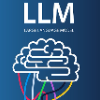Click-Through Rate (CTR) prediction is a crucial task in online recommendation platforms as it involves estimating the probability of user engagement with advertisements or items by clicking on them. Given the availability of various services like online shopping, ride-sharing, food delivery, and professional services on commercial platforms, recommendation systems in these platforms are required to make CTR predictions across multiple domains rather than just a single domain. However, multi-domain click-through rate (MDCTR) prediction remains a challenging task in online recommendation due to the complex mutual influence between domains. Traditional MDCTR models typically encode domains as discrete identifiers, ignoring rich semantic information underlying. Consequently, they can hardly generalize to new domains. Besides, existing models can be easily dominated by some specific domains, which results in significant performance drops in the other domains (\ie the ``seesaw phenomenon``). In this paper, we propose a novel solution Uni-CTR to address the above challenges. Uni-CTR leverages a backbone Large Language Model (LLM) to learn layer-wise semantic representations that capture commonalities between domains. Uni-CTR also uses several domain-specific networks to capture the characteristics of each domain. Note that we design a masked loss strategy so that these domain-specific networks are decoupled from backbone LLM. This allows domain-specific networks to remain unchanged when incorporating new or removing domains, thereby enhancing the flexibility and scalability of the system significantly. Experimental results on three public datasets show that Uni-CTR outperforms the state-of-the-art (SOTA) MDCTR models significantly. Furthermore, Uni-CTR demonstrates remarkable effectiveness in zero-shot prediction. We have applied Uni-CTR in industrial scenarios, confirming its efficiency.
翻译:暂无翻译




